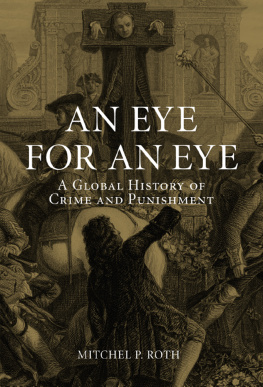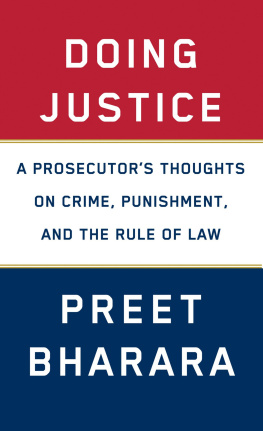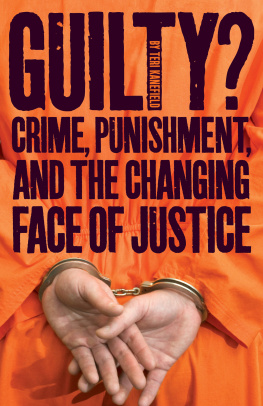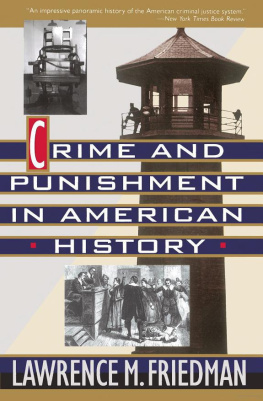Table of Contents
For Leah, jane, Amy, Paul, and Sarah
PREFACE
THE BOOK THAT FOLLOWS IS A GENERAL HISTORY OF AMERICAN CRIMINAL JUSTICE, from its beginnings in the seventeenth century to the present time. This is a vast subject, one that, frankly, has to be approached with a certain amount of fear and trembling. There is more to know about crime and punishment in this society than any human being can possibly know. The research on the subject, up to now, has been both thick and thin: so thick in some parts of the subject that no one can cope with it, certainly not I; in others so thin and wan that the intrepid storyteller is reduced to guesswork, weaving great swatches of narrative from little rags of data. Moreover, there is no way to tell it all, no way to make the story complete. The author is forced to make choices, to throw the spotlight on some parts of the subject while others are left in the shadows. In this day and age, this is bound to leave some readers frustrated or disappointed.
For many of the people who read this book, in a library or in the comfort of their homes, the world of crime and punishment may be something of a foreign country, one with strange customs, language, and manners; they stumble about like tourists clutching a phrase book. It is hard for the comfortable, the respectable, the solid middle class to imagine themselves in the shoes of the people on either side of the equationthose accused of crime, on the one hand; and the police, judges, wardens, and prosecutors, who do the accusing and the judging and the punishing, on the other.
I cannot pretend to be much better off myself, at least as far as the present is concerned. When I write about the past, I can make an honest attempt to bridge the chasm between what happened, and the readers own experience; I can try to bring to life the dead and buried dramas that I find, pinned like dead butterflies, in the texts of old records. The beginnings of this story took place more than three centuries ago. The end of itif it has an endis only yesterday. This last is the delicate, dangerous part. As we get closer to our own times, the material swells obscenely in bulk. And the bodies are not all dead and buried. There are human witnesses, people who have been through it, or are going through it, people who experience the system in a way I can only guess at.
I have no real idea, no authentic gut feeling, about life in blasted, weed-choked vacant lots between crack houses, or in dark streets desecrated with graffiti; or what it is like to be behind the wheel of a patrol car, slowly penetrating hostile territory, eyes groping to interpret shapes in an unfriendly darkness; or what it is like to sit on death row, or spend the night in a county jail, in a misery of moaning and vomit; or, for that matter, what it is like to be on trial as an inside trader or embezzler, or as a dumper of toxic wastes. Nor do I know the feelings that go through the mind of a public defender staggering under a stack of files, or a criminal lawyer picking a jury, or a judge in police court, or a juror trapped in a four-month murder case. Some of these experiences I can only guess atand hope I guess right. Other parts of the story I am forced to omit, or leave for somebody else to do.
At times, working on this book, I found myself somewhat discouraged. The subject is fascinatingbut also baffling and immense; fragmented into a thousand pieces; unwieldy, stubborn; hidden in dark places and inaccessible comers. It was easy to feel out of my depth.
But the sheer importance of crime and punishment, and their lurid attraction, won out at the end. Crime, in our decade, is a major .political issue. Of course, people have always been concerned about crime. But there is reason to believe people are more upset about crime today than ever beforemore worried, more fearful. They are most afraid of sudden violence or theft by strangers; they feel the cities are jungles; they are afraid to walk the streets at night. Millions of parents are afraid their children will turn into junkies. Millions see some sort of rot, some sort of decay infecting society, and crime is the pus oozing out from the wound.
These are not completely idle notions. Serious crime has skyrocketed in the second half of the twentieth century. We seem to be in the midst of a horrendous crime storm-a hurricane of crime. The homicide rate in American cities is simply appalling. It takes months or even years for Helsinki or Tokyo to equal the daily harvest of rape, pillage, looting, and death in New York City. Why is this happening to us?
A history of criminal justice can, I think, help illuminate this question. It can tell us where we were, and why; and more or less where we are going. At least it can try. History does not give us answers; but it does sometimes dispel myths, and it can be like a flashlight shining in dark and deserted comers. Hence I felt the story needs to be told.
No author works completely alone. I have to take responsibility for shortcomings, but I also need to thank at least some of the people who helped me. There are, first of all, the scholars who made my job easier because of their own work in the field. There are too many to name, but I want to express admiration and gratitude for the historical work of Edward L. Ayers, Michael Hindus, Roger Lane, Erik Monkkonen, Mary Odem, and Samuel Walker, among others. I also want to acknowledge the help of John Bogart, Sarah Friedman, Joanna Grossman, Chris Guthrie, David Himelfarb, Leslye Obiora, Thomas Russell, Reid Schar, and Paul Tabor. Lynne Henderson made detailed comments on an earlier draft, which were enormously helpful. I also benefited from comments by Barbara A. Babcock and Robert Weisberg. Joy St. John, as usual, helped me greatly with the manuscript at various points; and I owe a debt, too, to the staff of the Stanford Law Library for their patience and cooperation in running down the odd sources I demanded from time to time.
Stanford, California
February 1993
INTRODUCTION
ABOUT THREE AND A HALF CENTURIES AGO, THERE WAS A STIR IN THE COLONY of New Haven, Connecticut. A sow had given birth to a monstrous piglet. In the minds of the colonists, this was no accident. Surely the misbirth was some sort of omen. Specifically, it had to be a sign of sin, a sign of a revolting, deadly crime: carnal intercourse with the mother pig.
Who could have done this horrendous act? The finger of suspicion pointed to Thomas Hogg (unfortunate name). Hogg insisted he was innocent. Was he telling the truth? The magistrates put him to the test: they took him to a pigsty, and forced him to scratch at two sows in the enclosure. One sow, the mother of the monster-piglet, reacted with a show of lust when Hogg touched her. The other sow made no reaction at all. Hoggs guilt was now crystal clear.
Another scene: it is New York City, spring 1989. A group of young males in their teens, mostly black, sweep through the darkness of Central Park, in a mood of wild exuberance. First they chase a man on a bicycle. When he gives them the slip, they find and attack a young woman who, somewhat recklessly, has been jogging in the park. The woman fights back, but she is all alone; there are many of them, and they are much too strong for her. They rape her, beat her savagely, and leave her bleeding body in the bushes. The woman, who is white and works for a brokerage house, comes within an inch of death, yet somehow survives. The police find and arrest the young men who attacked her, and they go on trial in a blaze of publicity.


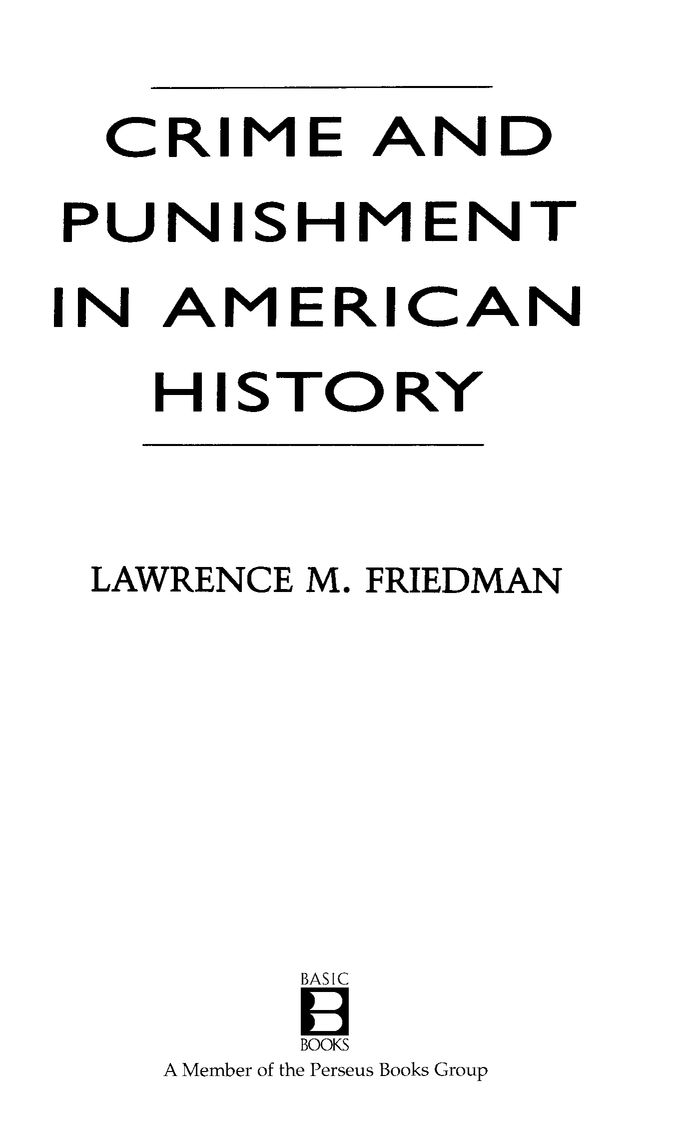

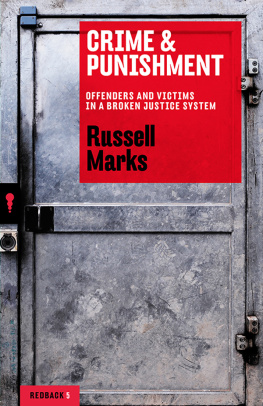

![Laura L. Finley - Crime and Punishment in America: An Encyclopedia of Trends and Controversies in the Justice System [2 Volumes]](/uploads/posts/book/305562/thumbs/laura-l-finley-crime-and-punishment-in-america.jpg)

